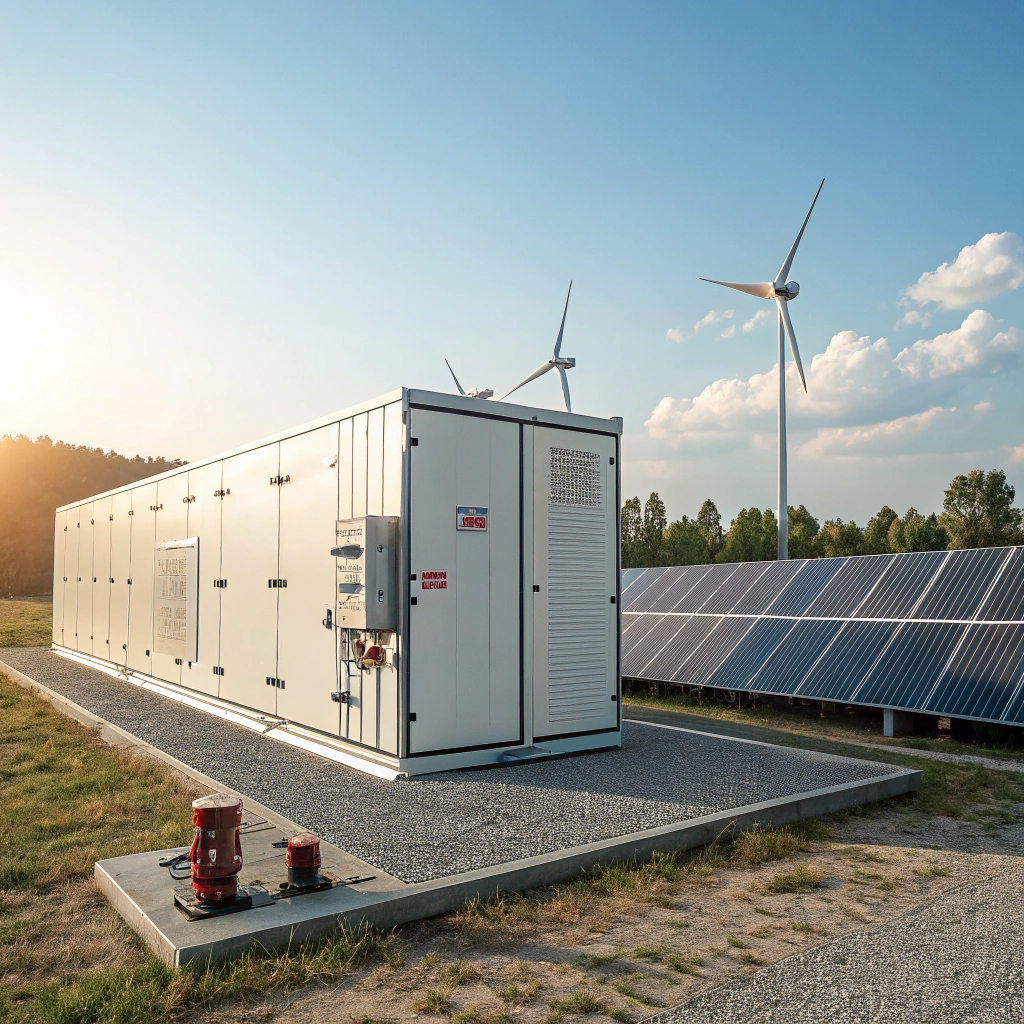How Do You Select and Effectively Utilize Energy Storage Cabinets in Large-scale Power Station Projects?
•
How Do You Select and Effectively Utilize Energy Storage Cabinets in Large-scale Power Station Projects?
Power grid instability threatens operations. Storage solutions seem complex. Energy storage cabinets offer reliable, scalable power management for large-scale stations.
Energy storage cabinets are selected based on capacity, efficiency ratings, thermal management, and grid integration capabilities. Proper selection ensures optimal peak shaving, valley filling, and frequency regulation for large-scale power stations.

When I first encountered energy storage systems in power stations, the sheer complexity was overwhelming. Yet, mastering the selection and utilization of these cabinets became the cornerstone of efficient grid management, transforming how we approach large-scale energy projects.
What Technical Parameters and Selection Criteria Matter for Power Station-level Energy Storage Cabinets?
Choosing wrong specifications costs millions. Technical parameters confuse buyers. Smart selection criteria ensure optimal performance and longevity.
Key technical parameters include battery capacity (MWh), power rating (MW), efficiency (>95%), cycle life (6000+ cycles), thermal management systems, and safety certifications for power station applications.
Selecting energy storage cabinets for power stations requires careful evaluation of multiple technical specifications. The most critical parameter is energy density - typically 150-250 Wh/kg for lithium-ion systems. Power density determines how quickly energy can be discharged, crucial for frequency regulation applications.
Critical Selection Parameters
| Parameter | Specification | Impact |
|---|---|---|
| Capacity | 1-10 MWh per cabinet | Determines storage duration |
| Power Rating | 0.5-5 MW | Controls discharge/charge rates |
| Efficiency | >95% roundtrip | Minimizes energy losses |
| Cycle Life | 6000+ cycles | Affects operational lifespan |
| Operating Temperature | -20°C to +60°C | Ensures reliability |
Thermal management systems must handle heat dissipation effectively, as temperature directly impacts battery life and safety. I've learned that inadequate cooling can reduce battery life by 50%, making robust thermal design essential for large-scale applications.
How Do Energy Storage Systems Enable Peak Shaving, Valley Filling and Grid Frequency Regulation?
Grid fluctuations waste energy. Demand peaks strain infrastructure. Storage systems provide intelligent load balancing and grid stabilization.
Energy storage systems store excess energy during low demand (valley filling) and discharge during peak hours (peak shaving), while providing rapid frequency response within seconds for grid stability.
Energy storage systems serve as the grid's shock absorbers, smoothing out the natural fluctuations in electricity supply and demand. Peak shaving reduces utility costs by discharging stored energy when electricity prices are highest, typically during afternoon and evening hours.
Grid Services Comparison
| Service | Response Time | Duration | Benefit |
|---|---|---|---|
| Peak Shaving | 15-30 minutes | 2-4 hours | Reduces demand charges |
| Valley Filling | Hours | 6-8 hours | Improves baseload utilization |
| Frequency Regulation | <1 second | Minutes | Maintains grid stability |
| Voltage Support | <1 second | Continuous | Improves power quality |
Frequency regulation is perhaps the most technically demanding application. When grid frequency deviates from 50/60 Hz, storage systems must respond within milliseconds to inject or absorb power, maintaining stability across the entire electrical network.
What Are Key Issues and Solutions in Operating and Maintaining Large-scale Energy Storage Cabinets?
Operations failures cost millions. Maintenance schedules overwhelm teams. Proactive solutions prevent costly downtime and extend system lifespan.
Common operational issues include thermal runaway, capacity degradation, and inverter failures. Solutions involve predictive maintenance, battery management systems, fire suppression, and regular performance monitoring protocols.
Operating large-scale energy storage systems requires vigilant monitoring and preventive maintenance strategies. Battery degradation is inevitable, but proper management can extend operational life significantly. I've witnessed systems lose 20% capacity within three years due to poor thermal management.
Maintenance Strategies
| Issue | Prevention | Solution |
|---|---|---|
| Thermal Runaway | Temperature monitoring | Fire suppression systems |
| Capacity Fade | Depth of discharge limits | Battery replacement scheduling |
| Inverter Failure | Regular inspections | Redundant power electronics |
| Connection Issues | Torque verification | Preventive cable replacement |
Advanced battery management systems (BMS) now provide real-time cell-level monitoring, enabling early detection of failing cells before they impact system performance. Remote monitoring capabilities allow operators to track system health from central control rooms, reducing on-site maintenance requirements while improving response times to critical issues.
Conclusion
Successful energy storage cabinet deployment requires careful parameter selection, understanding grid applications, and implementing robust maintenance protocols for optimal power station performance.




